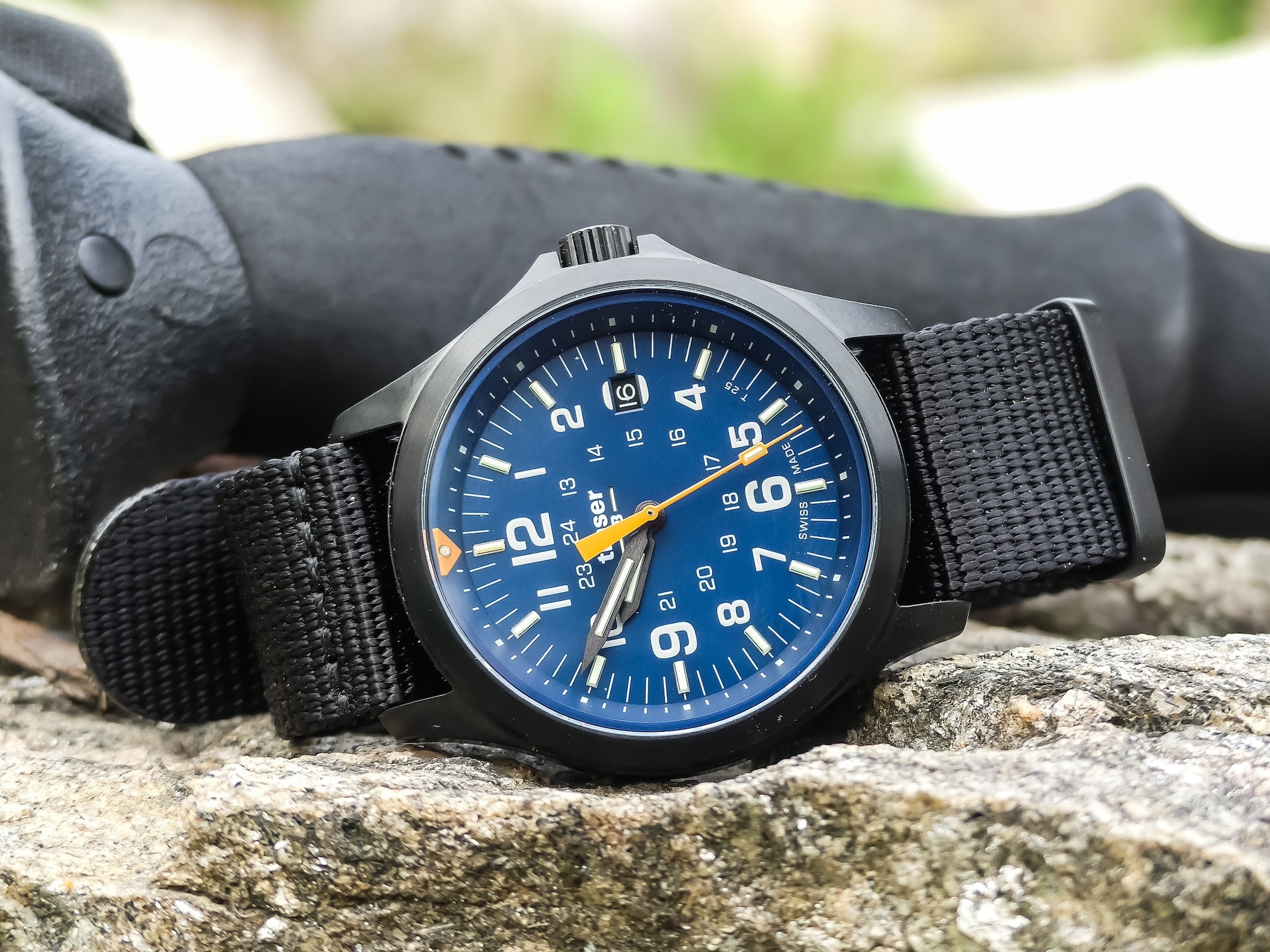If you’re a fan of tritium watches, you probably already know Traser and their extensive catalog of tactical and outdoor watches. But if you’ve never been down the tritium illumination rabbit hole, this Swiss giant of self-illuminating watches might not be on your radar. Traser is the in-house brand of mb-microtec, the company responsible for producing the tritium gas tubes used by other watch brands. With a three decade history and bragging rights of unrivaled vertical integration, Traser’s influence in the world of self-illuminating watches puts them at the top of an elite group of innovative brands. And, spoiler alert, no matter if you’re a seasoned pro or discovering tritium for the first time, Traser’s P67 Officer Pro is worth your attention.
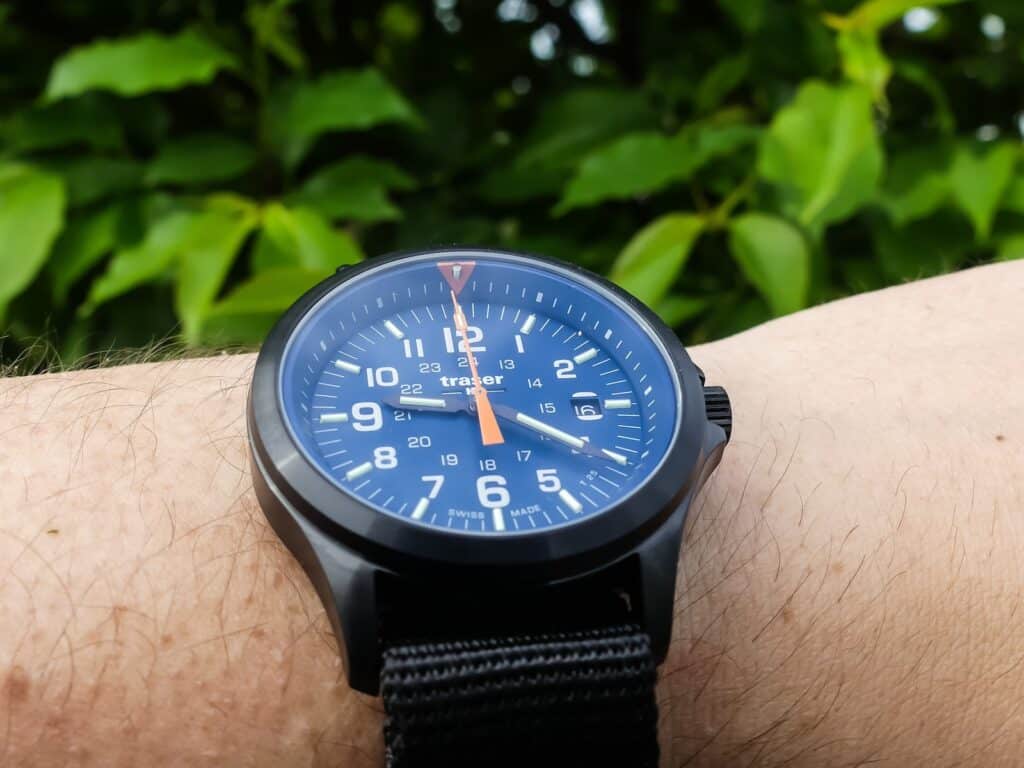
The tritium market
But what is tritium and how does it work? Tritium watches utilize trigalight tubes instead of the more standard Super-LumiNova. While painted lume requires an external light source to charge and lasts for only a number of hours, trigalight tubes contain a self-illuminating mixture of phosphor powder and tritium gas capable of glowing for up to 25 years.
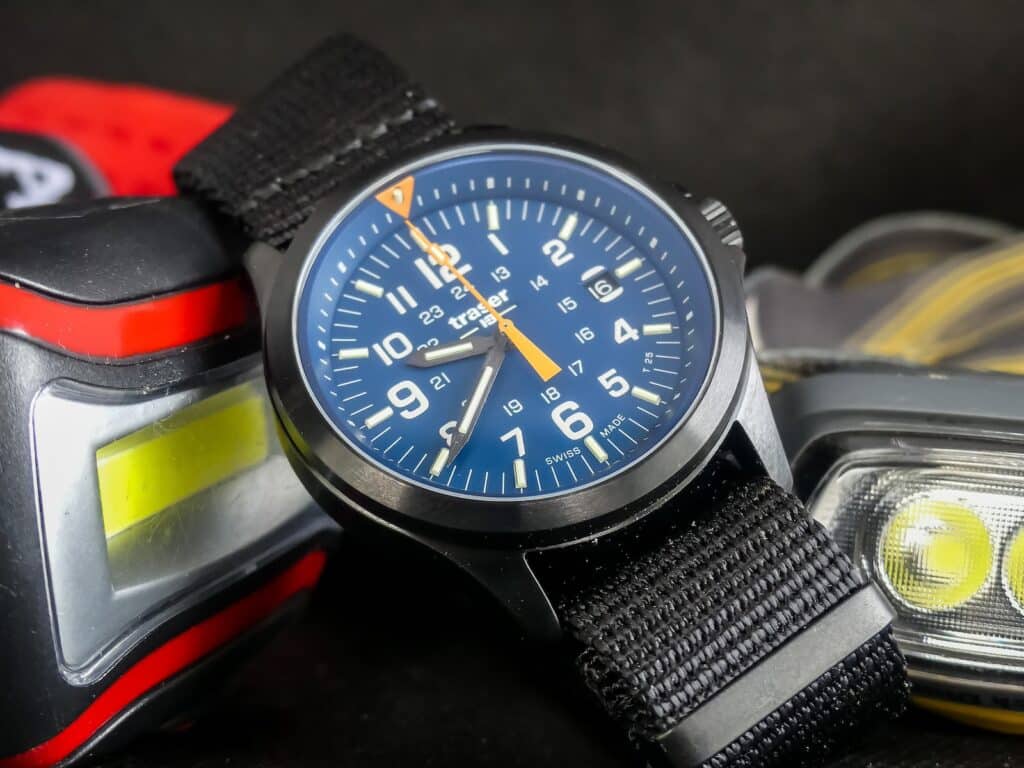
Opting to use tritium tubes instead of the more standard Super-LumiNova comes with built-in challenges. In addition to the licensing hassles inherent with this long-lasting yet safe technology, tritium tubes also add bulk to watch hands and dials. This added height requires cases and movements designed to tolerate their unique dimensions. Designing, manufacturing and distributing tritium watches isn’t for the faint of heart, and brands brave enough to use tritium tend to err on the side of the extreme. You’ve got your luxury yet often zany options from Ball Watch such as the Rainbow Engineer II, unexpected outliers such as the oversized complication-packed YES V7, and even watches that bring it all together such as the 44mm Deep Blue Daynight Stealth Ops with six colors of tritium.
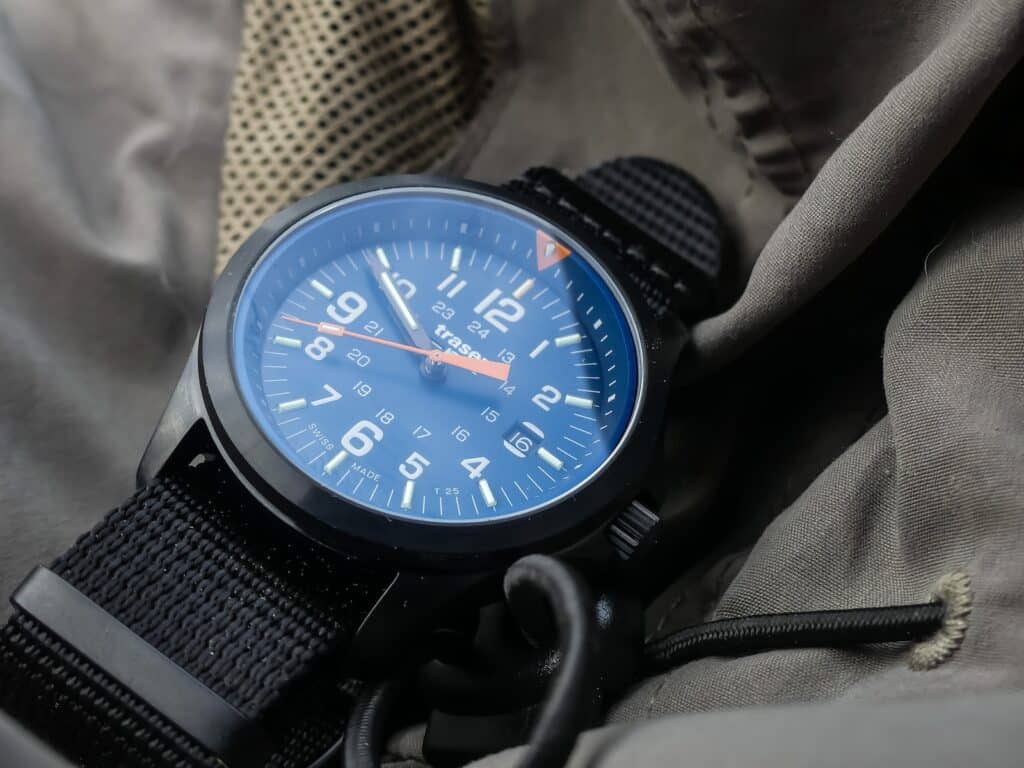
Unlike these easily recognizable and often outlandish staples of tritium watches, the Traser P67 Officer Pro is refreshingly subtle. At a glance, you’d be forgiven for mistaking it for any other field watch. Like other field watches, it prioritizes legibility over design, with only a brand logo and “Swiss Made” tucked among generously sized numerals. Sure, the PVD case might distinguish it from the average Hamilton Khaki or Seiko SNK, but black cases are no stranger in the world of field watches as more brands from Timex to Victorinox jump on the stealth and stylish bandwagon. But the P67 offers more than just your regular field watch, so let’s take a look at what sets it apart from other watches that share a similar military-inspired design.
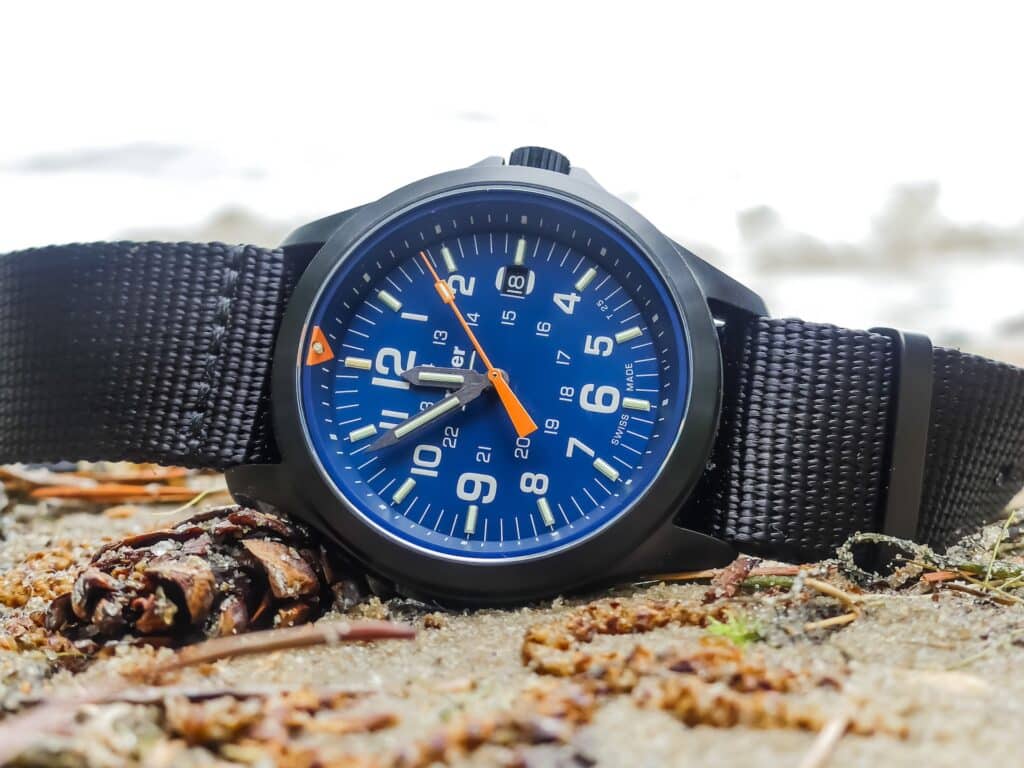
True field watch specs
With 100 meters of water resistance and an anti-reflective sapphire crystal, the P67 backs up practical illumination with practical specs. Putting the “field” in field watch, many field watches offer only 50 meters of water resistance. This is more than sufficient for getting caught in the rain while out exploring on land, but may not be advisable for extended periods of swimming. The last two field watches I personally owned were the Glycine Combat 6 and the Bulova Hack. Both with 50 meters of water resistance or less, they’ve been fine hiking companions in all weather conditions.
But if you’re looking for a true GADA (go anywhere do anything) timepiece, enthusiasts typically draw the line at a minimum of 100 meters of water resistance—offering bonus points if this can be achieved for a reasonable price with comfortable dimensions. Priced at around $500 and only 10 mm thick, I’m certainly not complaining about the upgrade to 100 meters of water resistance on the P67, especially with the added assurance of a screw down crown.
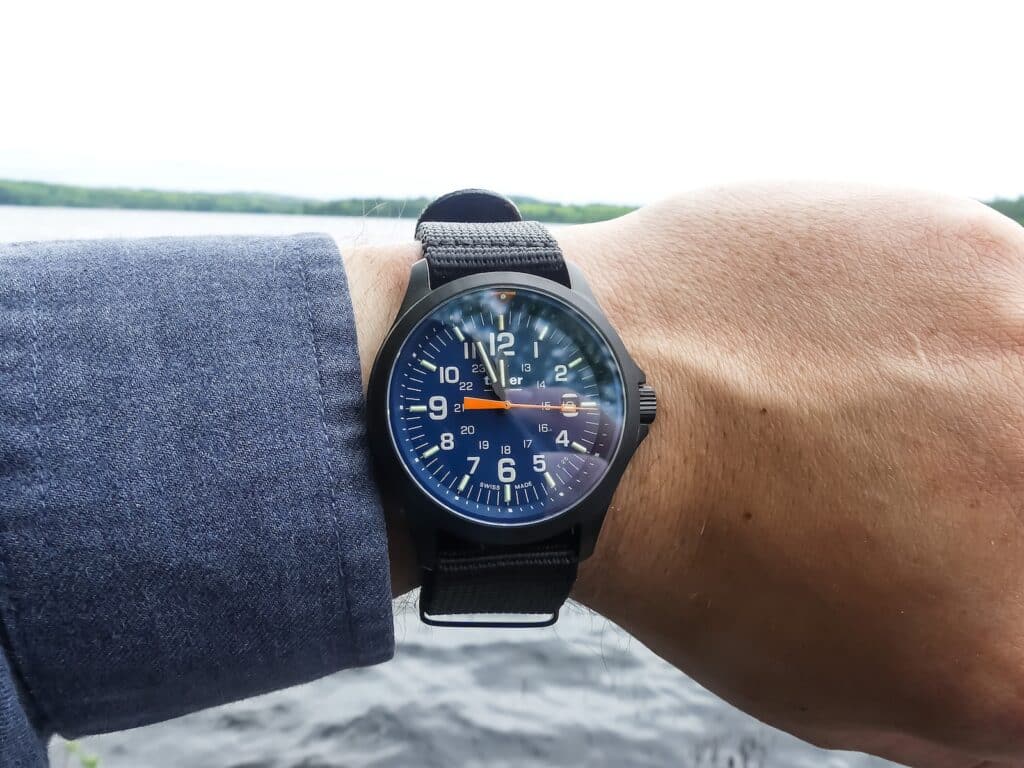
Strong presence and comfortable on the wrist
The Traser P67 Pro measures in at a 42mm diameter—the threshold where medium-sized watches transition to big watches. However, diameter alone never tells the whole story in terms of wearing experience. The Traser P67 wears slightly smaller than the average 42mm watch thanks to a sub 50mm lug to lug and its impressively thin profile.
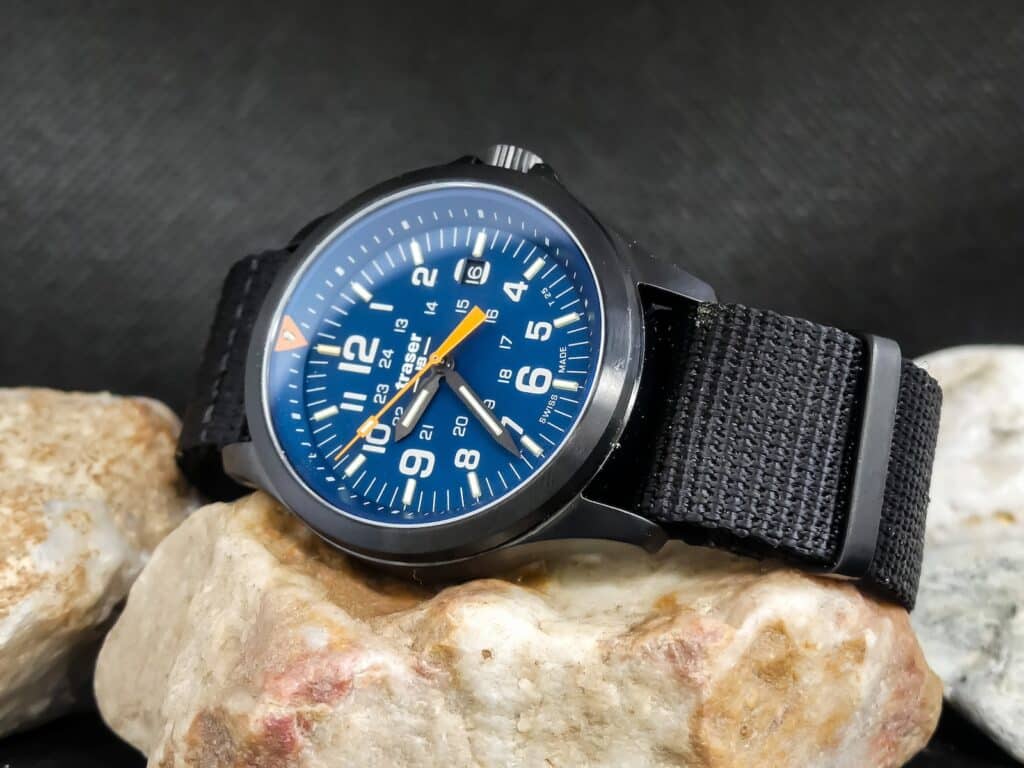
Before seeing the P67 in the metal, I was worried it would be one of those watches that are “all dial” as most large watches with thin bezels tend to be. However, I was pleasantly surprised to find the deep set dial (necessary to accommodate the thick hands) and inward sloping chapter ring prevented the blue dial from feeling disproportionately large. Don’t get me wrong, it’s still a big watch and doesn’t have an under-the-radar-look. But if you’re in the market for a PVD coated 42mm tritium watch, I’m guessing discreet aesthetics aren’t at the top of your priority list.
The dial features a 12 hour outer track with generously sized numerals complemented by a 24-hour inner track. The one minute markers are notably long, which I found helpful for telling exact time at a glance. Aside from the tritium, my favorite under-the-crystal features are the orange accents. A wide-based second hand is color matched to a large color-matched pip which even has an orange tritium tube (the rest are green). It’s a fun detail and helpful for quick orientation in low light/no light situations.
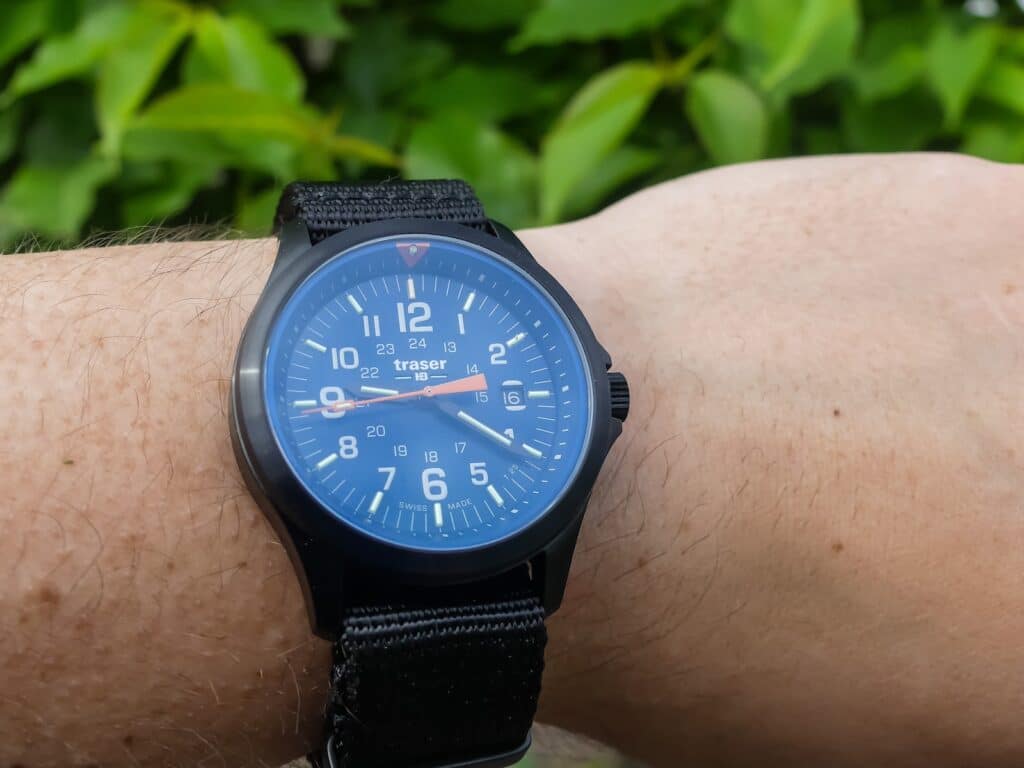
When I first opened the P67, I was disappointed to see black hands paired against a dark blue dial. Low contrast handsets on watches have long perplexed me due to lack of legibility. Sure, it’s nice when watches look cool, but I draw the line when functionality is sacrificed. However, thanks to the tritium tubes, Traser managed to keep the watch legible despite the low contrast hands. In no light conditions, I read the exact time (including watching the illuminated second hand jump around) with ease. And in daylight, while the hands themselves weren’t always easily spotted in low light, the white tubes embedded in them provided plenty of contrast to tell the time at a glance, made easier by an anti-reflective crystal.
The stainless steel case itself is simple, with uniform PVD coating throughout. Though this watch is mostly about what is happening under the crystal, Traser still added a signed crown tucked between the crown guards. The stealth motif carries over to the black nylon strap, with signed matching hardware. If you wanted to add some color, finding third party straps would be no problem thanks to the common 22mm lug width on the P67.
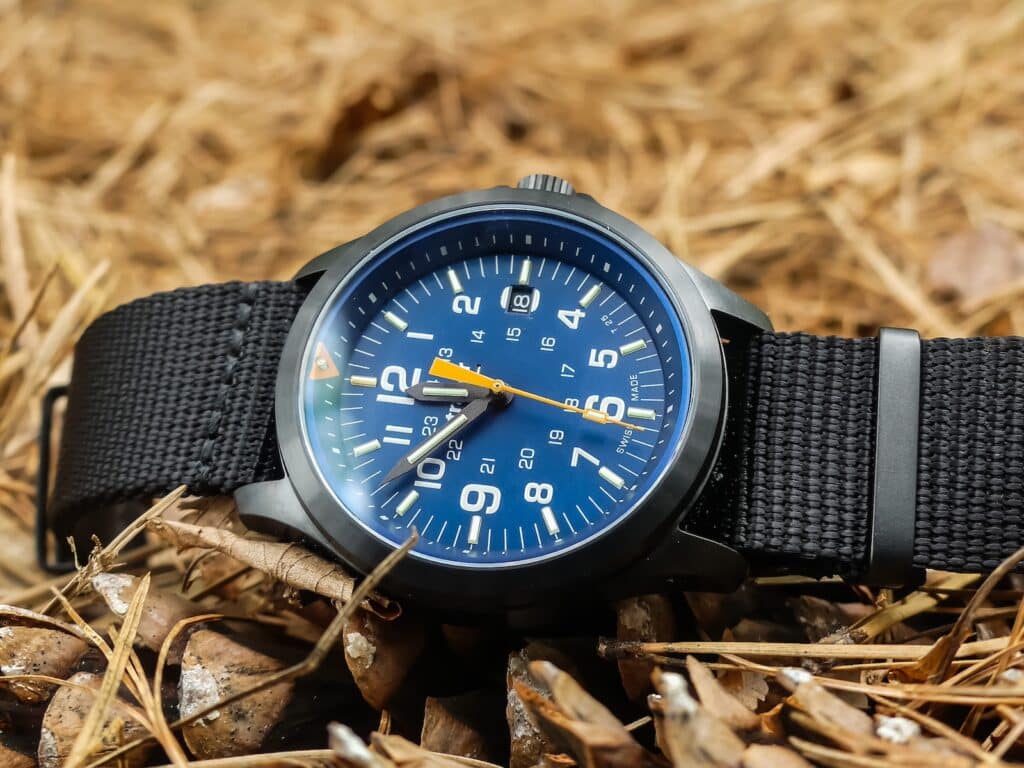
Final Thoughts: The P67 Fills a Niche Gap
The P67 Officer Pro Blue is a well built, perfectly capable field watch. And, considering the specs, I’d argue it’s appropriately priced. When build quality, execution and price are perfectly acceptable, the next question I always ask of a watch is: Why?
While tritium is less prominent than Super-LumiNova, there is still plenty of variety for consumers in the market for a perpetually glowing watch. Ranging from the affordable and small 34mm Marathon General Purpose to the big, flashy and pricey options from Ball Watch, we are spoiled for choice. I’d argue the “why” of the P67 lies within its middle of the road approach that distinguishes it from its extreme tritium peers.
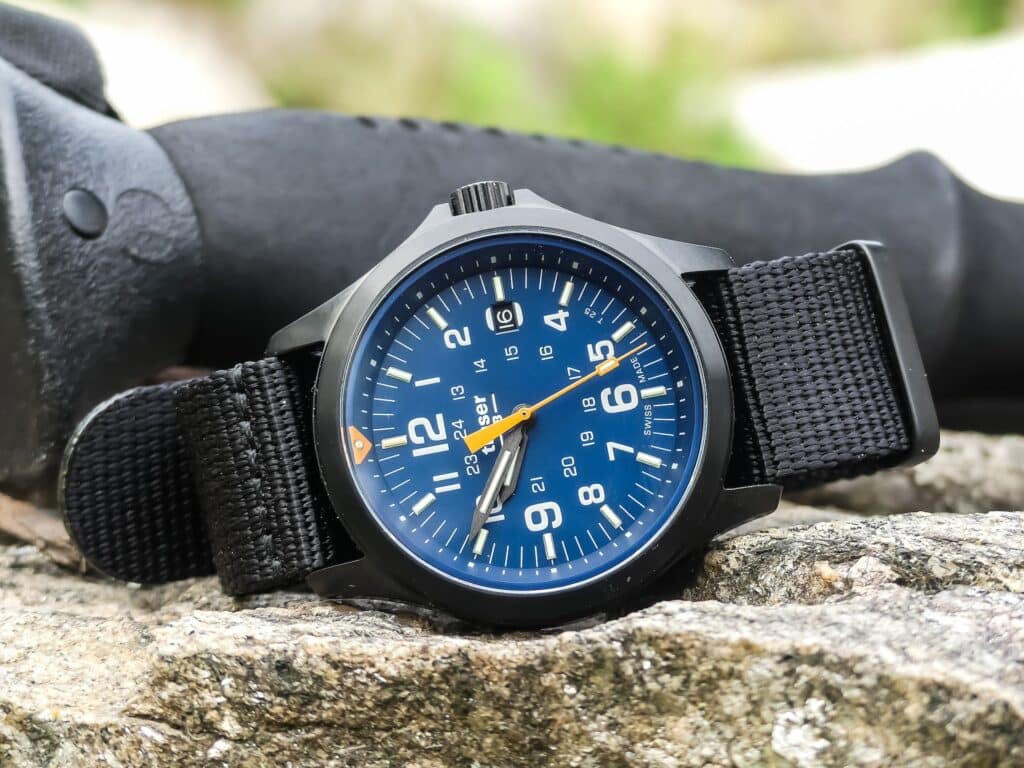
It’s not too big and not too small. With a classic field watch design, it’s anything but flashy, yet commands attention with bold numerals paired against a blue dial. And thanks to a run-of-the-mill quartz movement and vertical integration, it even offers reasonably accessible Goldilocks pricing of $530. Ultimately, the P67 Officer Pro Blue successfully fills a gap in the tritium watch realm.
Is the P67 for you? That really comes down to how much you value tritium illumination. Let’s face it, if tritium doesn’t matter to you, it’s hard to make an argument for spending hundreds of dollars on this quartz field watch instead of something more modestly priced such as the $59 Timex Expedition. But if tritium is something you value, you’ll be hard pressed to find a more compelling offering with 100 meters of water resistance and a classic design.

Nathan Schultz is a New Hampshire based writer with a passion for affordable timepieces. He became obsessed with automatic watches in 2019 after learning not all watches have batteries, and quickly fell in love with the joys of collecting and modifying watches and meeting fellow enthusiasts. When not poring over new releases from big brands and microbrands, he can be found putting his tool watches to the test on local hiking trails.
